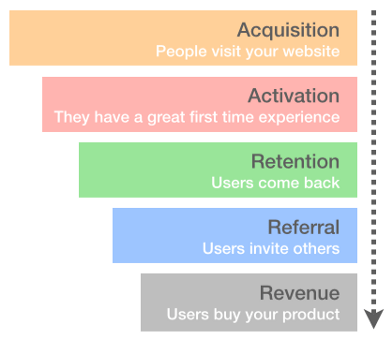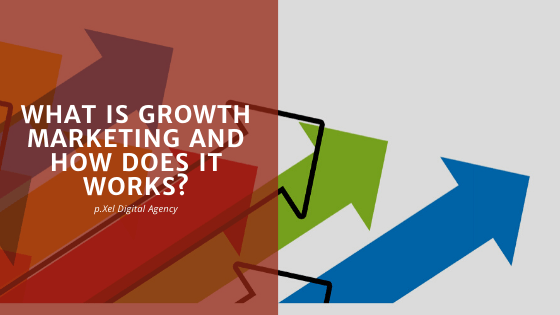Traditional marketing strategies are no longer a viable solution for businesses to generate awareness. With no room for experimentation and huge budgets, traditional marketing techniques have become obsolete. In this article, we are going to address how growth marketing strategies and experiments can solve the weaknesses traditional marketing has.
-
Growth mindset vs traditional marketing
-
How to build a growth process
-
Growth marketing best practices
Growth mindset vs traditional marketing
While traditional marketing focuses only on the top of the funnel, growth marketing focuses on the entire funnel.
According to John McBride, a Senior Marketer at Calm:
“Your job as a marketer is to drive business in any way that you can. The way that you drive data across all areas of the funnel is to constantly experiment with different programs, campaigns, product features, that increase conversion, create better customer experiences and generate data.”
As we can see, experimentation is one of the main features that define the growth marketing philosophy and is based on the Lean Startup Methodologies.
How Lean Startup methodology aligns with your growth marketing efforts?
The reason for doing that is because startups don’t have available a large budget to test their product. So instead of investing a lot of resources in building a product nobody is going to purchase, startups have to come up with innovative and creative ideas to test their product/services on a budget.
Therefore the Lean Startup Methodology is more about defining a hypothesis about what a customer wants and finds a quick and affordable that. Even if the hypothesis turns out to be wrong, at least it didn’t cost you a fortune to prove that. So this converts the lean startup methodology in a continuous learning process for a company and allows them to quickly validate or invalidate the hypothesis.
Experimentation as the defining trait of growth
When you implement a growth process the ideal state at which you want to reach is to know what is the right message, offer and customer experience you can create to drive better results and experience in your business. And to achieve this point you need to be able to formulate a realistic hypothesis and test them over a period of time. With each experiment, you learn more about your customer which will affect a business in a positive way.
How to build a growth process?
Whether you want to define a strategy for growing your revenue or user base, you can use Dave McClure’s Pirate Metrics framework. You can easily recognize this model under the name of AARRR framework.

During each phase of the AARRR framework, your efforts should be oriented to figure out all the different ways to affect your growth by bringing on new users, getting them to purchase or take the first action on your website.
Once you have defined all the growth strategies you are going to implement in each phase and are aware of all the channels at your disposal you need to start driving awareness.
For each phase of the growth framework, you will want to start defining goals. To achieve those goals you need to understand your customer needs during their lifecycle to design programs, campaigns and experiments based on who your customer is, how much they know about your brand, if they have interacted in the past with you and what actions they have taken.
When you define your model you will have three phases during the growth management process: high-level strategy, quarterly planning, and in-quarterly planning. For each phase, you would define goals and metrics to see the achievement of the specific goals you have planned.
Growth marketing best practices
After reviewing why the old marketing models are about to be replaced by growth strategies and frameworks. We are at a point where we understand the importance of experimenting, having a clear view about who our customer is and its lifecycle, we are in a better position to define what needs to be done to achieve better results in terms of revenue or user growth.
There are a couple of actions a business can start implementing straight away to experiment with its marketing strategies:
Use multiple channels to reach to your customers
Growth marketing strategies rely on multiple channels to communicate with their audiences By including a mix of organic growth with paid advertising marketing strategies you can get a foothold new markets, attract different audiences and gather more data about your customers.
As a result, each company needs to identify the channels where their audience is and see which works best for them.
Plan for the entire funnel
As we have mentioned before, we are interested to make the most of out of each contact point, it can be from a social media post, push notification, a landing page or email marketing campaign. Each one of these tactics is meant to make an impact in the funnel and help to reach the end goal of conversion. All these touchpoints can help you reach your target audience.
Measure and track all your experiments
You cannot assess whether an action implemented has an impact on a user unless it is tracked and measured against predefined metrics and sub metrics. This is very important to keep an eye on website analytics, social media measurement, mention trackers, SEO tracking and more.
Use A/B testing strategies to increase your success
Now only measuring and tracking is not enough. The core component of growth marketing is A/B testing. For each email campaign you are preparing there are at least 2 versions of the same email. You would send the first version to a small sample and a second sample with an element that is different. After the email campaign is executed you can see which version has performed better. The high-performing one can be A/B test against another version and on and on until you consider you are close enough o your best results and ROI.
To start experimenting with the tactics mentioned above you need to design your experiment and to do that you need to define your goals. The key components of any hypothesis are an independent variable, a dependent variable and your assumptions. What you are trying to see is how your dependent variable affects your independent variable.
Starting with small steps and not committing to major strategies will make a difference in all organizations looking to improve their current marketing strategies.




